Sotheby's announces highlights of the Important Chinese Art, Fine Classical Chinese Paintings & Calligraphy sales
NEW YORK, NY.- Sotheby’s announced the full offerings of their Asia Week sales of Chinese works of art, Chinese paintings and calligraphy. With exhibitions opening to the public on 8 September, visitors to New York headquarters will be able to experience all facets of Asian Art – pottery, bronzes, jades, ceramics, sculptures, paintings and calligraphy. Asia Week auctions begin on the 13th of September, with Important Chinese Art, followed by sales of Fine Classical Chinese Paintings & Calligraphy and Saturday at Sotheby’s: Asian Art on the 14th and 16th of September respectively.
An Exceptional and Extremely Rare ‘Ding’ Carved ‘Peony’ Vase from the Northern Song Dynasty is the top offering of the season (estimate $500/700,000). Coveted for its beautiful white hue, Ding wares have been highly sought after since the beginning of their production in the Song Dynasty. This particular work, carved with a peony motif signifying royalty and virtue, as well as wealth and honour, is a beautiful example of the mastery achieved by the artisans of the Ding kilns.
Lot 84. An exceptional and extremely rare “Ding” carved “peony” vase, Northern Song dynasty (960-1126), Height 10 in., 25.3 cm. Estimate $500,000–700,000. Courtesy Sotheby’s.
elegantly potted, of sumptuous meiping form, the full rounded shoulder sweeping up from a slender waisted body to a short cylindrical neck and everted rim, the body freely carved with two luxuriant peony blooms framed by their foliage, all above a band of overlapping petals at the foot, covered overall with an exquisite ivory-white glaze, stopping neatly at the foot.
Note: The dating of this lot is consistent with the result of a thermoluminescence test, C-Link Research and Development Ltd., no. 8070EH14.
The understated elegance and sublime simplicity of white Ding ware evokes ideals of classical beauty to be one of the most admired ceramic wares of China to this day. True Ding ware is mostly of good quality and pleasing design, but this vessel is an exceptionally rare and outstanding example of the ware at its very best: combining exquisite material with fine potting, graceful proportions and a freely incised design that appears to have been sketched from life. Furthermore, while open vessels such as bowls and dishes were created in abundance, upright examples of this type represent a maturation of techniques of which very few examples have survived.
The booming demand for white wares is the product of a fresh aesthetic that was brought about by the newly established Song dynasty and the subsequent changes in the distribution of wealth and resources as well as a renewed discovery of the beauty of nature. In a quest to establish an identity that deviated from that of the Tang but aimed at reviving a romanticised concept of antiquity based on Han dynasty Confucian ideals, the scholar-elite of the Song promoted commercial liberalism which granted much freedom to the activities of merchants, brokers and landowners who in turn transformed the capital into a vibrant urban hub.
Within this dynamic atmosphere, the Ding kilns of the Northern Song period experienced surges in development and popularity. Given the overall excellence of this white ware, it is natural that the court selected it as one of its official ceramics. Many Ding vessels were discovered in the tomb of Emperor Taizong’s empress, who died in AD 977 and was later reburied in AD 1000. A large number of Ding vessels from the Qing court collection still remain in the Palace Museum, Beijing, and in the National Palace Museum, Taipei, several of them bearing inscriptions by the Qianlong Emperor. Many early Ding wares, particularly of the Tang (618-907) and Five Dynasties (907-960) periods, but also of the Song dynasty, are inscribed with the character guan (‘official’) of xin guan (‘new official’), and the excavations of the Quyang kiln sites in Hebei province have brought to light sherds of the Song and Jin (1115-1234) dynasties inscribed with the characters dong gong (‘Eastern Palace’), and the names of two administrative units within the court. See the catalogue to the exhibition Ding ci ya ji. Gugong Bowuyuan zhencang ji chutu Dingyao ciqi huicui / Selection of Ding Ware. The Palace Museum’s Collection and Archaeological Excavation, Beijing, 2012, cat. nos 3, 6-9, 28.
Most of the pieces and fragments thus identified are, however, bowls and dishes. Ding bottles, vases or jars, in fact any upright shapes, were extremely rarely produced by the Ding white ware kilns around Baoding city in Hebei province, which had specialised in the production of round, open shapes. Open shapes could quickly be thrown on the potter’s wheel and manufactured in large quantities. Closed, upright shapes, especially with a swelling shoulder rising from a slender foot and narrow neck as seen on the present vase, represented a much greater challenge, requiring precision in throwing to make the separately thrown parts fit, and diligence in joining to ensure neat and firm alignment, and were much more likely to collapse or tilt in the kiln.
Only a small number of Ding meiping vases are known but all of larger size; a closely related vase, from the Sir Percival David Collection and now held in the British Museum, London (fig.1), is illustrated in Regina Krahl and Jessica Harrison-Hall, Chinese Ceramics. Highlights of the Sir Percival David Collection, 2013, pl. 8. A further larger meiping of this type, incised with a floral design between radiating combed petals at the shoulder and tall stiff leaves at the foot, in the Palace Museum, Beijing, is illustrated in The Complete Collection of Treasures of the Palace Museum. Porcelain of the Song Dynasty (I), Hong Kong, 1996, pl. 36; a second, even larger, vase, reconstructed from fragments, is published in Ding ci ya ji. Gugong Bowuyuan zhencang ji chutu Dingyao ciqi huicui / Selection of Ding Ware. The Palace Museum’s Collection and Archaeological Excavation, op. cit., 2012, pl. 35. Another meiping, but incised with lotus blooms, in the National Palace Museum, Taipei, was included in the Museum’s exhibition Decorated Porcelains of Dingzhou. White Ding Wares from the Collection of the National Palace Museum, 2014, cat no. II-9; and another, the neck missing, carved and incised with peonies, from the Alfred Clark Collection and included in numerous exhibitions including the International Exhibition of Chinese Art, The Royal Academy of Art, London, 1935, cat. no. 1166, was sold in our London rooms, 25th March 1975, lot 30.
A Ding meiping vase with carved peonies, Northern Song Dynasty, 11thC-12thC., Height: 36,5 cm, PDF 101. Copyright the Sir Percival David Collection / © The Trustees of the British Museum.
This September’s auction of Important Chinese Art also features significant sancai-glazed and monochromatic works of art. Coming from a private Japanese collection, a Rare Sancai-Glazed Pottery Rhyton and an Exceptionally Rare Green-Glazed Phoenix-Head Pottery Ewer, both from the Tang Dynasty, beautifully balance molding, carving and glazing (estimate $50/70,000 and $80/120,000 respectively). A Fine ‘Clair-deLune’ Glazed Brush Washer is, on the other hand, a lesson in simplicity; the luminous glaze brings attention to the perfection achieved in the potting and firing of the ceramic.
Lot 76. A rare sancai glazed pottery rhyton, Tang dynasty (618-907), Length 5 1/4 in., 13.5 cm. Estimate $50,000–70,000. Lot sold 516,500 USD. Courtesy Sotheby’s.
of horn shape, the curled dragon head terminal issuing a bifurcated foliate scroll joined to the side of the pointed oval mouth of the vessel, the rounded sides molded with petal-scroll motifs on a granulated ground, splashed overall with green, amber and straw-colored glazes, wood stand, Japanese wood box (4)
Provenance: Sotheby’s Hong Kong, 29th November 1976, lot 404.
Collection of the British Rail Pension Fund.
Sotheby’s London, 12th December 1989, lot 62.
Spink & Son, London.
Exhibited: Victoria and Albert Museum, London, 1977-1985 (on loan).
Dallas Museum of Art, 1985-1988 (on loan)
Note: This piece is striking for its elegant form and detailed decoration of palmettes on a stippled ground, and ranks amongst the best surviving examples of Tang period rhytons. A brown-glazed dragon-shaped rhyton of this form, but with somewhat less complex decoration on the body, from the Schiller Collection in the City Art Gallery, Bristol, was included in the exhibition The Arts of the T’ang Dynasty, Los Angeles County Museum, Los Angeles, 1957, cat. no. 184; and a green-glazed example lacking the foliate scroll and with a pearl in its mouth, illustrated in Sekai tōji zenshu/ Catalogue of World Ceramics, vol. 11, Tokyo, 1976, pl. 129, sold twice in our London rooms, 7th April 1981, lot 140, and again, 10th June 1986, lot 14. Compare also rhytons in the form of ducks, such as one in the Palace Museum, Beijing, illustrated in Compendium of Collections in the Palace Museum. Ceramics, vol. 5, Sui (581-618), Tang (618-907) and Five Dynasties (907-960) (II), Beijing, 2013, pl. 295; another published in The Charles B. Hoyt Collection in the Museum of Fine Arts, vol. 1, Boston, 1964, pl. 94; a third, included in the Oriental Ceramic Society exhibition Arts of the T’ang Dynasty, London, 1955, cat. no. 146, and sold in our London rooms, 14th July 1970, lot 9; and a further example, sold in our London rooms, 21st June 1983, lot 95.
The rhyton is a drinking vessel originally made from ox or buffalo horn, which was introduced into China through Central and Western Asia, where it was made in silver and precious stones. Rhytons appeared in China from as early as the Han dynasty, and were made in a variety of materials, including pottery, glass and silver. While a number of surviving rhytons from the Tang period, such as the white-glazed example in the British Museum, London, illustrated in Margaret Medley, T’ang Pottery & Porcelain, London, 1981, pl. 4, were clearly modelled after Persian silver originals, the present example has incorporated Chinese elements, such as its dragon shape.
Lot 77. A Rare Green-Glazed Phoenix-Head Pottery Ewer, Tang dynasty (618-907), Height 11 3/8 in., 29 cm. Estimate 120,000 — 180,000 USD. Lot Sold 150,000 USD. Courtesy Sotheby’s.
superbly potted, the ovoid body rising from a tall splayed foot to a double-waisted neck, all below a wide pinched mouth attached to the shoulder by an arched double-strap handle with a tabbed thumb-piece, the body with three horizontal bands of grooved circles, applied with crisply molded floral crests and stylized palmettes, all beneath splashed straw, green and amber glazes, stopping unevenly to reveal the buff body at the base, Japanese wood box (3)
Provenance: Acquired in Japan in the 1960s (by repute).
Note: This flamboyant ewer encapsulates the international spirit and the opulent atmosphere at the Chinese court in the first half of the Tang dynasty (618-907), which saw an unprecedented rise in the ingenuity and skills of the country’s artisans who strove to meet the rising demands of an affluent and discerning aristocracy. With the increased commercial and cultural exchange with Western Asia through the Silk Road, Chang’an emerged as an international metropolis par excellence. Its sizable communities of foreign residents from across Asia allowed craftsmen to come into contact with an abundance of styles and techniques, which they quickly synthesized in creating the aesthetic trends of the period.
The present piece, although unique, belongs to an extremely small group of ewers modeled with a pinched mouth and decorated with floral appliques. The application of these sprig-molded reliefs, which evokes the encrustation of precious metal objects with jewels and pearls, were widely used in the Northern Qi period, and their popularity continued into the Tang dynasty, when fanciful floral and foliate palmette motifs appeared in a multitude of myriad versions on artifacts of various media, including textiles, silver and ceramics.
A ewer of similar form, but with a variation of floral appliques, was included in the exhibition Sui Tō no bijutsu [Arts of the Sui and Tang Dynasties], Osaka Municipal Museum of Art, Osaka, 1978, cat. no. 91; another, covered almost entirely in a blue glaze, in the Fuji Art Museum, Tokyo, is illustrated in Sekai tōji zenshu / Ceramic Art of the World, Tokyo, 1976, vol. 11, pl. 39; a third, of more globular shape, from the collection of George Eumorfopoulos and now in the British Museum, London, is published in R.L. Hobson and A.L. Hetherington, The Art of the Chinese Potter, London, 1923, pl. XV; and two further examples are illustrated in Masterpieces of Chinese and Korean Ceramics in the Ataka Collection, Tokyo, 1980, pls 48 and 49.
Ewer with Phoenix Head and Applied Medallions, Three-colour Glazes, Tang dynasty (618-907), H 28.4 cm, W 15.8 cm, D 12.1 cm, Fuji Art Museum, Tokyo
'Sancai'-glazed ewer, decorated with a flower design, Tang dynasty (618-907). Made of green, brown glazed earthenware. H: 27 cm, 1936,1012.209 © The Trustees of the British Museum
Compare also a sancai censer decorated with similar applique, included in The Special Exhibition of Tang Tri-Colour, National Museum of History, Taipei, 1995, cat. no. 80; and another from the collection of Howard C. Hollis, included in the exhibition The Arts of the T’ang Dynasty, Los Angeles County Museum, Los Angeles, 1957, cat. no. 197.
Lot 7. A Fine ‘Clair-deLune’ Glazed Brush Washer, Kangxi mark and period (1662-1722), Diameter 4 5/8 in., 11.7 cm. Estimate 60,000 — 80,000 USD. Lot sold 384,500 USD. Courtesy Sotheby’s.
of compressed circular form, supported on a shallow tapered foot, the rounded sides rising to an incurved rim, covered overall with a pale lavender-blue glaze draining to white at the mouth, the white-glazed base with a six-character mark in underglaze blue.
Provenance: Acquired in New York, circa 1985.
Note: Brush washers were an essential part of the scholar's studio, permitting the erudite occupant to refresh his brush and elegantly express his ideas through ink. During the Qing dynasty, small porcelain objects for the scholar's table, including brush washers, waterpots, and amphora vases, were produced in two new glazes, 'peachbloom' and 'clair de lune'. Whilst brush washers are more commonly found than other forms, far fewer examples appear to survive in pale blue than in 'peachbloom'.
Washers of this elegant form and subtle coloration are an innovation of the Kangxi reign and display the great technical advances made at the imperial kilns in Jingdezhen at the beginning of the Qing dynasty, which saw the creation of numerous monochrome glazes. The tian lan (sky blue) glaze is among the most striking products of the imperial kilns and was achieved by diminishing the amount of cobalt oxide in the glaze mix. Vessels covered in this delicate glaze are often very finely potted, an indication that they were probably made in the latter years of the Kangxi reign, as suggested by Suzanne G. Valenstein in A Handbook of Chinese Ceramics, New York, 1989, p. 241.
Three 'clair-de-lune' brush washers of this type from the Wiedener collection, now in the National Gallery of Art, Washington D.C., are illustrated in Decorative Arts, pt. II, Washington, 1998, pp 98 and 99; two in the Baur collection are published in John Ayers, The Baur Collection, Geneva, vol. 3, 1973, pls A318 and A320; and a further example was sold in our Hong Kong rooms, 1st November 1999, lot 341 and again in our London rooms, 12th July 2006, lot 153. See also a slightly smaller washer of this type in the Palace Museum, Beijing, illustrated in Compendium of Collections in the Palace Museum. Ceramics, vol. 23, Shunzhi (1644-1661) and Kangxi (1662-1722) Periods of Qing Dynasty, pl. 62; and another in the Shanghai Museum, Shanghai, published in Kangxi Porcelain Ware from the Shanghai Museum Collection, Hong Kong, 1998, pl. 218.
Brush Washer, Kangxi period, 1662/1722, porcelain with pale blue glaze, overall: 4.8 x 12.1 cm (1 7/8 x 4 3/4 in.), Widener Collection, 1942.9.484 © 2017 National Gallery of Art
Brush Washer, Kangxi period, 1662/1722, porcelain with pale blue glaze, overall: 4.2 x 11.8 cm (1 5/8 x 4 5/8 in.), Widener Collection, 1942.9.488 © 2017 National Gallery of Art
Brush Washer, Kangxi period, 1662/1722, porcelain with pale blue glaze, overall: 4.2 x 11.7 cm (1 5/8 x 4 5/8 in.), Widener Collection, 1942.9.489 © 2017 National Gallery of Art
Fine Classical Chinese Paintings & Calligraphy, taking place on 14 September, offers a diverse repertoire of classical and modern that visually illustrates the enduring appeal of Chinese painting. The 230-plus lot sale is led by Zhang Daqian’s Splash Landscape (estimate $450/650,000). The vibrant cobalt and verdant hues of this ink and color on paper are all-encompassing, pulling the viewers into its painterly world. While also a landscape, Wang Hui’s Landscape After Ni Zan offers an entirely different experience (estimate $300/500,000). Adhering to the techniques of classical Chinese paintings of the past, this hanging scroll wonderfully showcases the artist’s capability in calligraphy and painting.
Lot 706. Zhang Daqian (Chang Dai-chien) 1899-1983, Blue Cliff and Old Tree, signed Yuan weng, with one seal of the artist, da qian wei yin da nian, ink and color on paper, mounted for framing, 59.8 by 83.5 cm. 23 1/2 by 32 7/8 in. Estimate 450,000-650,000 USD. Courtesy Sotheby’s.
Provenance: Acquired by the present owner directly from the artist when he was living in Brazil
Lot 540. Wang Hui (1632-1717), Landscape after Ni Zan, ink on paper, hanging scroll, 106 by 52.6 cm. 41 3/4 by 20 3/4 in. Estimate 300,000-500,000 USD. Courtesy Sotheby’s.
signed Shigu Wang Hui, dated renshen, the first day of the seventh lunar month (August 12, 1692), with four seals, wang hui zhi yin, wu shan shi gu, shuang xi, yi zai dan qiu huang he bai shi qing teng shi jian
Attached inscription by Zha Shenxing (1650-1727), signed Zha Shenxing, dated guisi (1713), summer, the leap month, with three seals, zha shen xing yin, hui yu, chen han jing ye tang; Tang Youzeng (1656-1721), signed Tang Youzeng, dated jiawu, the twenty-third day of the third lunar month (April 17, 1714), with two seals, you zeng, xi ya
Titleslip by Zhao Shuru (1874-1945), signed Zhao Shuru, dated xinwei (1931), spring, with one seal, zhao shi gang yin
With two collector's seal of Zhou Xiangyun (1878-1943), xiang yun mi wan, gu yin zhou shi bao mi shi mi ji yin; one collector's seal of Ma Jizuo (1915-2009), ma ji zuo yin; and one marking seal.
Alongside Wang Hui stand classical masters including Dong Qichang, Shen Zongjing, He Shaoji and Shitao, also known as Yuanji. His Essay in Regular Script, an album of forty-four leaves, is a beautiful example of the strong yet lyrical hand of the artist (estimate $180/280,000). A Poem in Running Script by Xuanye, the pen name of Emperor Kangxi, also represents the power of calligraphy; sitting at the intersection of art and literature, it is unsurprising to learn that this art of writing was the prized visual art form in China over millennia (estimate $100/150,000).
Lot 515. Shitao (Yuanji) 1642-1718, Essay in Regular Script, with four seals of the artist, ban ge han, da di zi ji, ling ding lao ren, qing xiang shi tao, geng xin cao tang, and one collector's seal, you zhu shu wu zhen cang shu hua yin, ink on paper, album of forty-four leaves, each 22.1 by 11.4 cm. 8 3/4 by 4 1/2 in. (44). Estimate 180,000-280,000 USD. Courtesy Sotheby’s.
Lot 571. Xuanye (Emperor Kangxi) 1654-1722, Poem in Running Script, with two imperial seals, yuan jian zhai, ji gu you wen zhi zhang. Inscription on mounting border with a dedication to Ji Yu (active early 18th century), ink on satin, hanging scroll, 112.7 by 34.1 cm. 44 3/8 by 13 3/8 in. Estimate 100,000-150,000 USD. Courtesy Sotheby’s.
Provenance: Acquired in Hong Kong between 1949-1970s and thence by descent.
Property of the Rende Zhai (House of Benevolent Learning) collection.
Note: The Rende Zhai Collection was assembled between 1949-1970's in Hong Kong by Dr. Olaf K. Skinsnes (1917-1997), who was born in Henan in 1917 to medical missionaries. He had a distinguished career as a medical doctor and a professor at the Universities of Hong Kong, Chicago, Hawaii, and the Sun Yat Sen University of Medical Sciences in Guangzhou. His wife, Elizabeth Anderson Skinsnes, shared his love of Chinese art and culture, and they viewed the collection as a teaching instrument to spread the richness of Chinese culture and history through art. Dr. and Mrs. Skinsnes lived much of their life in China, and in 1992, the Chinese government awarded Dr. Skinsnes the Friendship Medal in recognition of his contributions.
Saturday at Sotheby’s rounds out Sotheby’s Asia Week this September, with a sale encompassing over 400 paintings and works of art. Featuring everything from jades to porcelain, textiles to furniture, bronzes to pottery, this sale represents the abundance of categories Chinese art and paintings have to offer. A ‘Huanghuali’ and Mixed-Wood Square Corner Cabinet from a Chicago private collection is a beautiful and functional work of art; from the Late Qing Dynasty, this cabinet comes to auction with a pre-sale estimate of $20/30,000. Two Famille-Rose ‘Magpie and Prunus’ Vases from the 20th Century are decorative examples of the ceramic arts. Measuring 20 7/8 inches in height, these tianqiuping vases are brightly painted with magpies and prunus trees, representing strength and fortune (estimate $30/50,000).
Lot 941. A ‘Huanghuali’ and Mixed-Wood Square Corner Cabinet, late Qing dynasty. Estimate 20,000-30,000 USD. Courtesy Sotheby’s.
of rectangular outline, with a pair of fielded parallel doors above a wide horizontal panel, the sides with plain fielded panels, the four uprights forming the frame and legs joined by shaped spandreled aprons, the interior with a pair of shelves and two drawers above a concealed well with removable covers, with metal hinges, lockplates and pulls. Height 69 1/2 in., 176.5 cm; Width 43 in., 109.2 cm; Depth 19 5/8 in., 49.8 cm
Lot 990. Two Famille-Rose ‘Magpie and Prunus’ Vases, 20th Century, Height 20 7/8 in., 52.9 cm. Estimate 30,000-50,000 USD. Lot sold 37,500 USD. Courtesy Sotheby’s.
each of tianqiuping form, the exterior brightly painted with numerous magpies among gnarled flowering prunus trees, the base with an apocryphal six-character Qianlong seal mark in underglaze blue (2).

/https%3A%2F%2Fprofilepics.canalblog.com%2Fprofilepics%2F1%2F0%2F100183.jpg)
/https%3A%2F%2Fstorage.canalblog.com%2F03%2F02%2F119589%2F96711876_o.jpg)
/https%3A%2F%2Fstorage.canalblog.com%2F11%2F31%2F119589%2F94773502_o.jpg)
/https%3A%2F%2Fstorage.canalblog.com%2F20%2F83%2F119589%2F94772815_o.jpg)
/https%3A%2F%2Fstorage.canalblog.com%2F26%2F72%2F119589%2F75604929_o.jpg)
/https%3A%2F%2Fstorage.canalblog.com%2F59%2F60%2F119589%2F26458628_o.jpg)



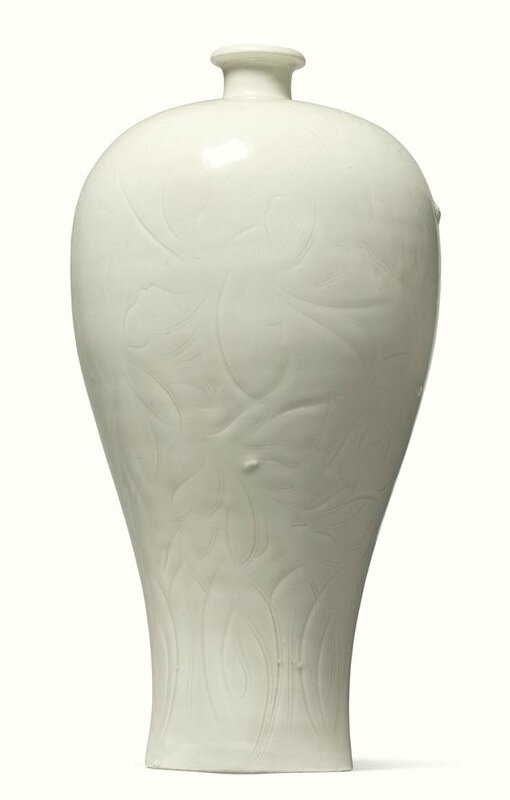










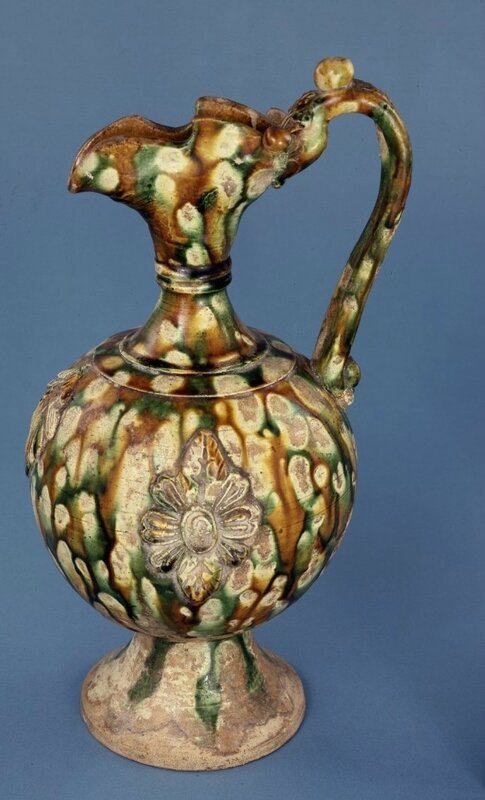

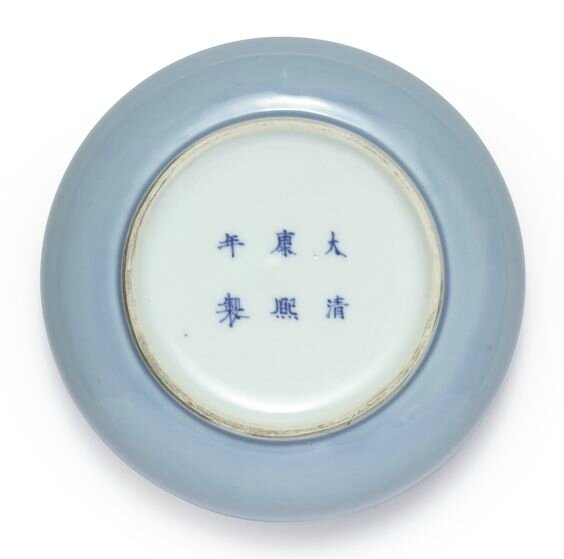


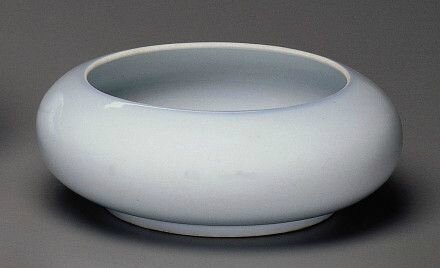



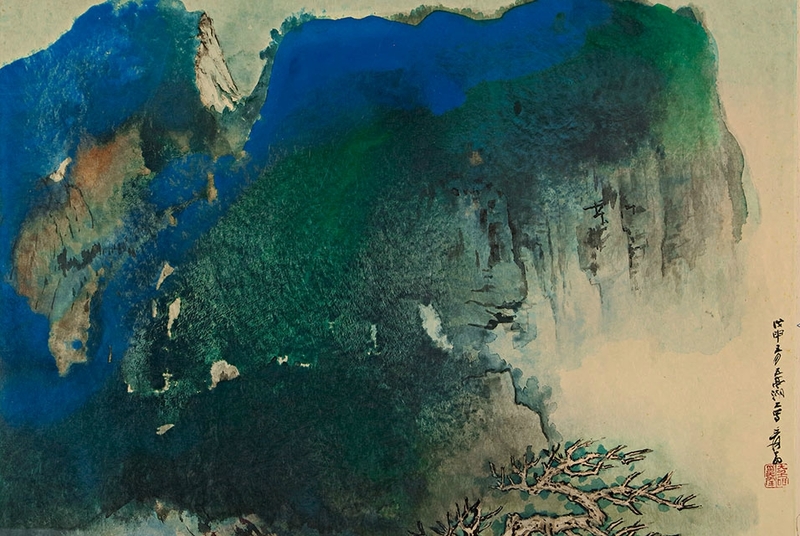







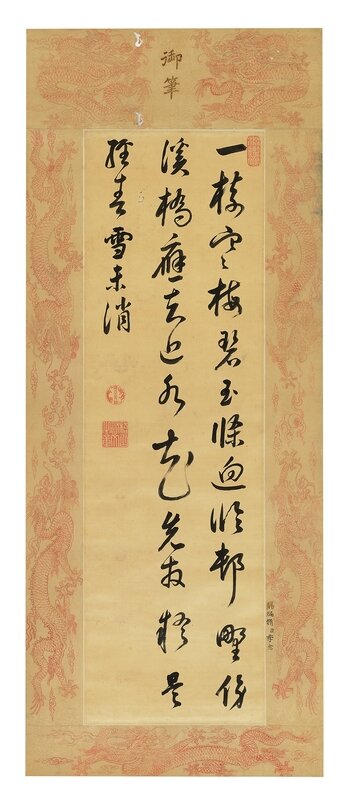




/http%3A%2F%2Fstorage.canalblog.com%2F51%2F44%2F119589%2F129781278_o.jpg)
/http%3A%2F%2Fstorage.canalblog.com%2F02%2F15%2F119589%2F129541319_o.jpg)
/http%3A%2F%2Fstorage.canalblog.com%2F55%2F89%2F119589%2F129509226_o.jpg)
/http%3A%2F%2Fstorage.canalblog.com%2F80%2F13%2F119589%2F129503955_o.jpg)